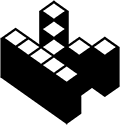
THURSDAY, DEC 31, 2015

Semanto-graphy
For the 23d Century
[for T@ 23d sEnturi]
Eric Lee, A-SOCIATED PRESS
TOPICS: DIAGRAMMATIC LANGUAGE, FROM THE WIRES, LITERACY, UNIVERSAL LANGUAGE
TUCSON (A-P) — To communicate meaningfully in writing is semanto-graphy. There are over six thousand spoken languages. The human memescape is an expanse of Babel. Over 60 spoken constructed languages have been devised (e.g. Esperanto) in an attempt to create a shared language to unite humanity. Alternative to spoken are diagrammatic languages. Visual symbols replace sounds, so 1 2 3 replaces one, two, three, uno, dos, tres, ichi, ni, san....and six thousand Babel variants. Mathematical symbols, a diagrammatic language (symbols for concepts independent of sound), allow for universal numeracy regardless of what the symbols are called. If humans could only do math in spoken symbols (natural language words), advanced math would not exist or if a few managed to do more than rudimentary computations it would be in spite of their natural spoken language and not because of it.
Rudimentary concepts can be expressed in natural language, all 6,000+ of them, but advanced thought may be achieved only by a few in spite of the spoken language learned secondary to an accident of birth and not because of it (the Liebniz conjecture). Spoken language learned as a foreign language is typically achieved, if at all, at the price of great effort over a period of years, and an ability to write clearly is rarely achieved even in one's native language. In the endeavor to think well, natural language may not be the best tool as it clearly is not for being numerate. Imagine a lecture on quantum chromodyamics in which only words were used without visual diagrams or symbols. Now imagine the lecture is in one of the 6,000+ languages you do not speak.
Advanced thought without diagrammatic languages would not be advanced. Bohr's model of the atom is a diagrammatic language, Feynman's diagrams is another diagrammatic language. Odum developed a system of energy-based diagrams to help think about complex systems too complex to think about by stringing words or even words and numbers together. Charles K. Bliss created his ideographic language, Semantography (Blissymbolics), to do for literacy what math symbols do for numeracy — make advanced thought possible for more humans. All diagrammatic systems (semanto-graphy) are potentially consiliant and may, by the 23d century if not before, dominate communication and enable humans to think well. Those who are multilingual will know several diagrammatic languages that preform non-overlapping functions. All who consider themselves "educated" will have a passing ability to be semantographically literate, mathematically numerate, and systems ecolate. Universal education for literacy, numeracy, and ecolacy is achievable to some degree for all humans functioning within normal parameters. The more talented could learn more diagrammatic languages and continuously improve their grasp of each.
Diagrammatic languages typically incorporate currently used character sets (Arabic numerals, Latin letters, X-SAMPA typable 7-bit ASCII characters for IPA (International Phonetic Alphabet), symbols used in science, and internationally used symbols. Latin is used to taxonomically name organisms, and ideographs for proper names are not needed and could be italicized (like Latin in English writing) and used per current international convention although SAMPA would allow all words to be written as spoken and eventually might replace Latin names for organisms or place names used in English. Ideographs for common plants and animals would be used, but for taxonomists and biologists, the Latin names could be used and written in X-SAMPA.
What is needed is a shared alternative to natural languages, all 6,000+ of them, to allow for an overarching diagrammatic language. There is already one, Bliss' Semantography system. For universal diagrammatic literacy it, or one very much like it, would have to be used. Since Bliss has already invented the diagrammatic literacy wheel, we might as well use and build upon it.
C.K. Bliss is dead but users make Semantography a living language that can evolve and self-organize as our collective need for a meaning-based universal language is realized. Semantography would be primarily written but could also be spoken if need be. Since all ideographs would have one and only one speakable form that reflects the sub-symbols used to construct the concept, Semantography that could be typed on existing keyboards in ASCII would be fast to input, and on computers the associated ideographs could appear above the typed text. The typable code would include a programming sub-language to allow new ideographs to be constructed.
If all one has is pen and paper, just draw the ideographs. If no paper, speak the ideographs. This would be suboptimal as the listener may have to reconstruct uncommon ideographs in their mind's eye. This would require a two step parsing of speech to ideograph, less efficient than just looking at the ideograph and getting the message. So the X-SAMPA characters could be spoken and or used for fast ideographic writing input. The result could be printed on paper, signs, or screens and would be universally understood by the literate whose native language would serve its evolved purpose, and most humans, the educated ones, would be multi-diagrammatically literate, numerate, and ecolate. Physicists could still have fun with Feynman diagrams and electrical engineers could use their diagrams.
In typing Bliss character names, all names of all elements are combined to type the ideograph's ASCII name. But after typing enough to distinguish one character from others, add z to indicate abbreviation. In speaking, a terminal [z] sound means abbreviation. All common words tend to have simple ideographs, and relatively short names. The more common words are abbreviated to create a shorthand typing system to minimize typing and increase input speed. An Abbreviation Dictionary will be needed. Rare ideograms can be spelled out in full and largely reconstructed from the typeable name.


